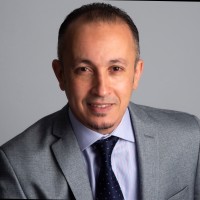Day 2
- Auditorium 1
2nd CELL & GENE THERAPY WORLD CONGRESS 2024 EUROPE
"Driving Innovation, Addressing Significant Unmet Medical Needs, and Ultimately Improving Patient Outcomes"
Day 2 - Friday 4th October 2024
COLLABORATION AND PATIENT ACCESS
- The importance of stakeholder engagement: perspectives across different functions
- Creating a CGT platform: stakeholder engagement as a tool to support not only the development/commercialization of specific assets, but to build a sustainable platform
- How national level activities can impact on patient access to ATMPs
- Further national level collaboration between academic, clinical and industrial players is necessary to overcome the existing hindrances and boost further development of ATMPs in Europe.
Panellist: Dr. Alexander Natz, Secretary General, EUCOPE
Dr. Alexander Natz, Secretary General, EUCOPE
- To Follow
 Marco Traub, CEO, The Trans European Stem Cell Therapy Society
Marco Traub, CEO, The Trans European Stem Cell Therapy Society
- The significance of rationalizing clinical trials to reduce logistical and financial burdens for participants
- Leveraging technology to enhance access to treatment and specialist care
- Data-driven strategies to make informed decisions
- Patient-centred approach for better experience and outcomes
- Focusing on ensuring the equitable access to biologics and specifically RNA based drug products by everyone, everywhere.
 Prof Harris Makatsoris, Professor of Manufacturing Systems, Department of Engineering, King’s College London
Prof Harris Makatsoris, Professor of Manufacturing Systems, Department of Engineering, King’s College London
- Unique public-private partnership that has increased the access to new treatment options for patients
- Promote further innovation in clinical research using the strengths of the partnership
- Align potentially conflicting organizational cultures to maximize efficiencies and share project leadership
- Utilize a precision medicine master protocol to bring cutting-edge advances
- Allow for broader patient access and clinical trials that are more inclusive than standard industry-run trials
- Significant milestones in the development of gene therapy medicinal products that have facilitated the treatment of a significant number of rare diseases
- Bottlenecks and potential solutions that can improve access to gene therapy for rare diseases.
- Stakeholders engagement to bring about changes to improve access to gene therapy
MARKET ACCESS AND PRICING
- Circumventing operational complexities and regulatory barriers
- Consider near- and longer-term implications and opportunities to influence the design of the model
- Ability of the model to reduce costs and improve access
- Monitoring the development to better understand successful contracting arrangements
- Assess how potential therapeutic area expansion may impact pricing, reimbursement, and access for other gene therapy products.
- Past (learnings…)
- Benefit Structures / Cost / Contracting (e.g., Outcomes Based)
- Evidence & its Evaluation
- Special Considerations (e.g.,
– Dealing with surrogate endpoints
– Modifications & Flexibilities for Evaluation of Rare Diseases)
- Introduction of GCT Market Potential and Trends in Japan (commercial, regulatory and reimbursement)
- Opportunities in Japanese GCT market (political considerations and incentives)
- Challenges and Recommendations
 Mohamed Oubihi, Founder and CEO, YAKUMED LIMITED
Mohamed Oubihi, Founder and CEO, YAKUMED LIMITED
- Current landscape
- Existing innovative contracting with gene therapies
- How to overcome key challenges to innovative payment models.
- Leveraging real-world evidence to define outcome measures
- Implications to gene therapy manufacturers
- Breakthroughs and innovations in research and development
- Implementing next-generation technologies
- Novel pricing and market access strategies pharma will employ to increase patient access
- Various CGTs in the pipeline
- What will the next decade hold for these life-changing therapies?
